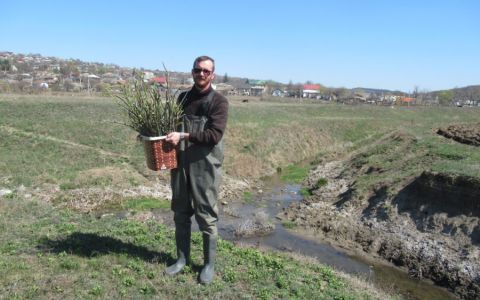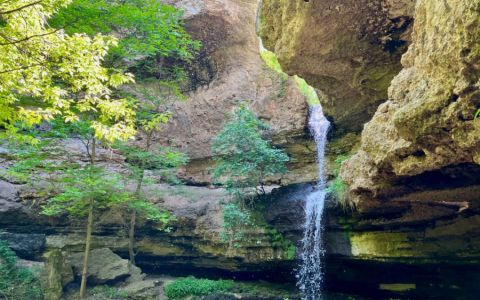Iagorlîc is a scientific reserve in the central-eastern part of the Republic of Moldova, located at the mouth of the Iagorlîc river, on the left bank of the Dniester (Transnistria). The reserve was established in 1988. Currently, the area of the reserve is 11.35 km2.
The reserve includes aquatic and terrestrial ecological systems where conditions have been created for the reproduction of animals and plants. The reserve was organized in order to preserve and study the ecological conditions characteristic of the water basins near the Dniester. The greatest value of the nature reserve consists in many rare and endangered species of plants which enter the unique phytocenoses (group of plants forming a particular ecosystem) located on the calcareous steppe slopes.
In the flora of the Iagorlic reserve, 837 species of vascular plants were discovered, of which 91 species of various rarity categories. They differ in distribution throughout the region and the number of populations, there are also species with a high risk of extinction in nature. Many species are included in the regional and European Red Lists, some of them need special conservation measures, especially species of high rarity categories.
The specificity of the ecological conditions of the reserve, in particular the presence of wetlands, shrubs, steppe and rocky areas, determines the high diversity of fauna.
Of all the protected natural areas of Transnistria, the reserve is in first place in terms of the wealth of ornithofauna.There are about 200 species of birds, of which about 100 species nest. Of the rare birds in the reserve, there are: Great White Egret, Black Stork, Mute Swan, Common Goldeneye, Osprey, European Honey-buzzard, Black Kite, Greater Spotted Eagle, Lesser Spotted Eagle, White-tailed Sea-eagle, Saker Falcon, Corncrake, Eurasian Scops-owl, etc. In autumn, the reserve has the highest bird diversity, since in addition to native nesting species, span northern feathers appear here, among which there are many rare ones included in the Red Book.
According to the latest data, 24 species of mammals have been recorded on the territory of the reserve. Good fodder and protective conditions, the lack of a factor of concern favorably affect the living of European Roe Deer and Wild Boar here, the abundance of fish in the factory attracts Eurasian Otter, and the old bridge near the office of the reserve serves as a home for many species of bats, some of which are rare: Lesser Horseshoe Bat, Daubenton's Myotis, Noctule and others. Of the protected animals in the reserve, Eurasian Badger and European Wild Cat. Common predators for the reserve are a Red Fox and a Beech Marten.
About 20 species of amphibians and reptiles live in the reserve. Common European Green Lizards, Grass Snake and Dice Snake, Large Whip Snake, European Pond Turtle, European Tree Frog, Marsh Frog, Edible Frog.
The reserve is rich in entomofauna, there are many rare species of insects: Stag Beetle, Xylocopa, Swallowtail, Clouded Apollo, Dryad, Brimstone, Peacock Butterfly, Large Tortoiseshell, Freyer’s Purple Emperor, Cardinal, Meleager's Blue, Great Peacock Moth, Jersey Tiger, etc.
The water bodies of the nature reserve are also preferred by various representatives of the fauna. They are most important for various fish species, which use them for spawning. The ichthyofauna lists 23 species of fish. There are 24 species of mammals, 200 species of birds from 14 orders. Rare species include hazel snake, yellow-bellied snake, water turtle. Among the birds found in the reserve area are the fishing owl (Pandion haliaetus), the last reported only during migration, species included in the Red Book of Moldova. The avifauna of the reserve consists of 200 species of birds, of which 100 of them make their nests. 15 species of birds, registered in the nature reserve, are included in the Red Book of Moldova (2001), 12 species in the Red Book of Ukraine (1994).
More information about Iagorlîc here and here.
In Iagorlîc, many educational and environmental activities take place: excursions for the general public and for future nature guardians, planting new forests, green belts planting, making artificial water bird nests, installation of infopannels or refurbishment of a sanitary zone.







